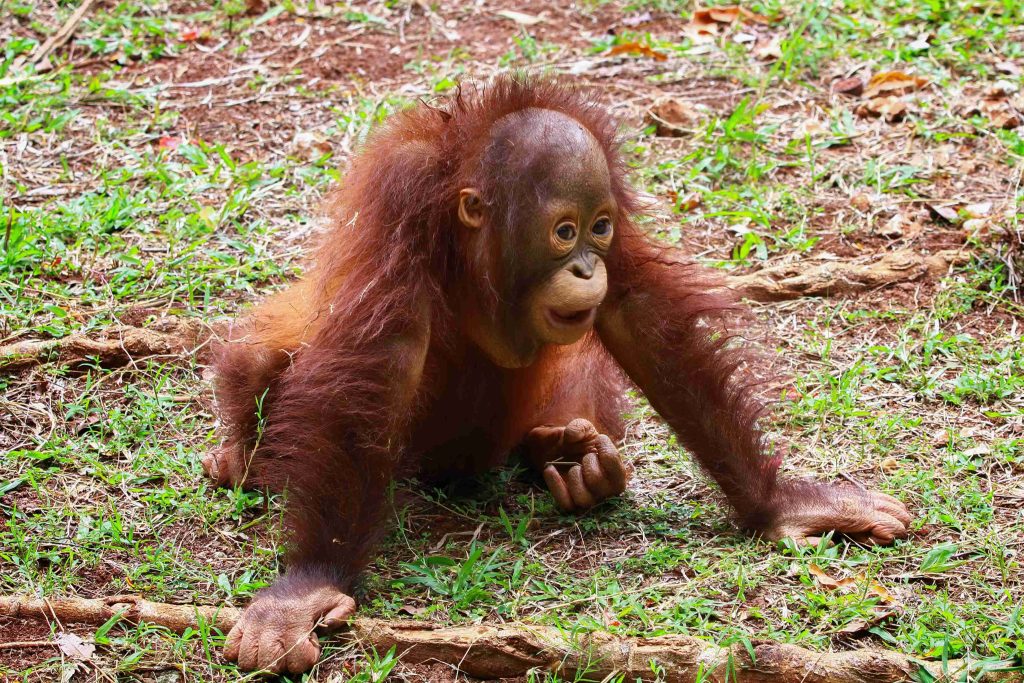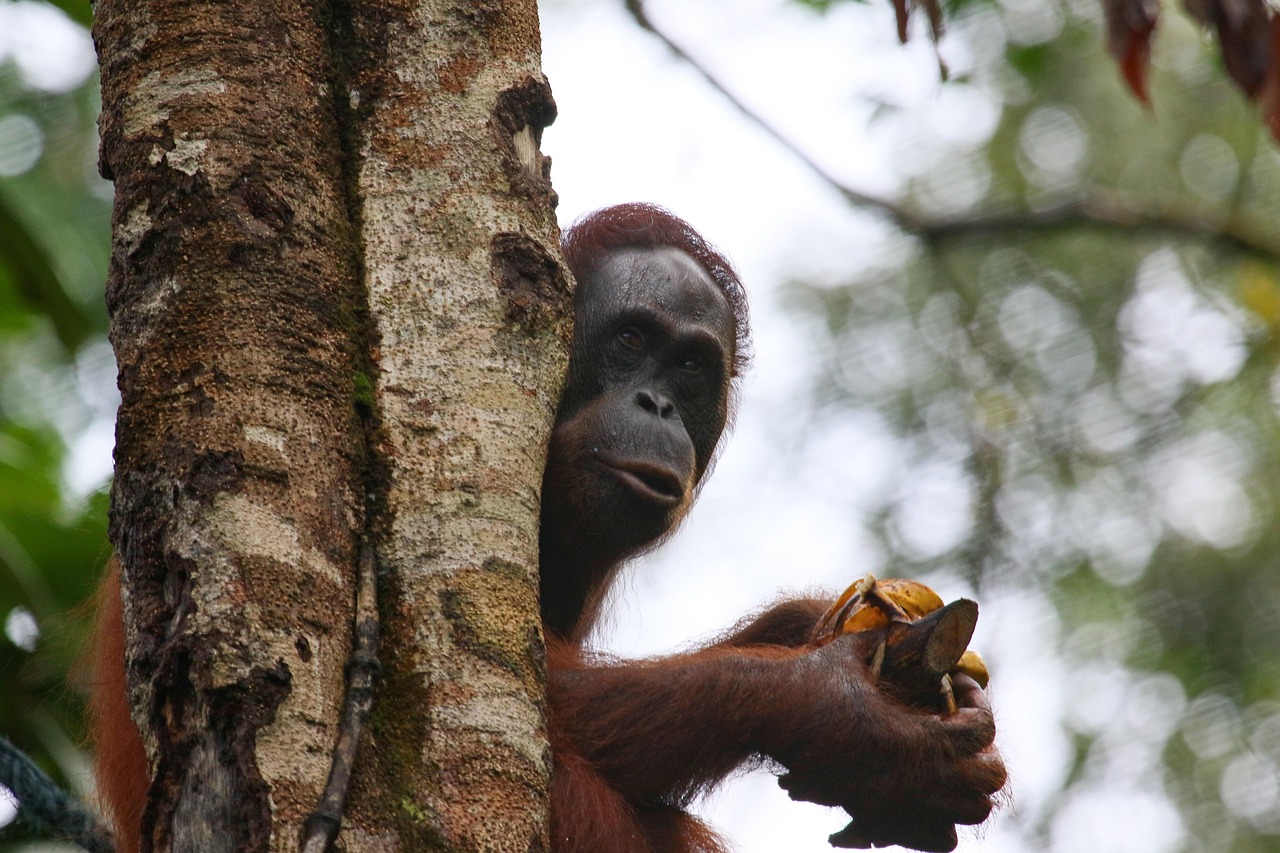Orangutans are among the most remarkable great apes on Earth. With their fiery red hair, extraordinary intelligence, and close genetic relationship to humans, they are symbols of both nature’s brilliance and fragility. But to truly understand orangutans, one must look beyond the individual animals themselves and study the ecosystems in which they live. These ecosystems — the tropical rainforests of Borneo and Sumatra — are not just homes to orangutans but also among the most biodiverse landscapes on the planet.
The survival of orangutans is inextricably tied to the health of these ecosystems. By exploring their biodiversity, habitat characteristics, and the threats they face, we gain insight into why protecting orangutan forests is essential for global ecological balance.
The Orangutan Ecosystem: Where Do They Live?

Orangutans are native to two islands in Southeast Asia:
- Borneo, shared by Indonesia (Kalimantan), Malaysia (Sabah and Sarawak), and Brunei.
- Sumatra, specifically in the north, within the Indonesian province of Aceh and North Sumatra.
Historically, orangutans were far more widespread, ranging across much of mainland Asia and down into Java. Today, their range has dramatically contracted, restricted to increasingly fragmented forest patches.
Also read: Eco Friendly Orangutan Tours for Conscious Travelers
Types of Orangutan Habitats
Orangutans live in a variety of forest ecosystems, each with unique characteristics:
- Lowland Dipterocarp Forests
- Rich in fruiting trees like figs and durians.
- Provide abundant food resources.
- Support high orangutan densities.
- Peat Swamp Forests
- Found in areas with waterlogged soils.
- Difficult terrain but crucial carbon sinks.
- Orangutans adapt by feeding on swamp-specific plants and fruits.
- Montane and Sub-Montane Forests
- Found at higher altitudes (up to 1,500 meters).
- Cooler, more seasonal environments.
- Lower orangutan densities but vital refuges.
- Riverine Forests
- Located along rivers, often corridors between larger habitats.
- Important for connectivity, allowing orangutans to travel between forest patches.
These ecosystems differ in productivity and challenges, but all are essential for orangutans’ survival and biodiversity conservation.

Biodiversity Within Orangutan Ecosystems
The forests that orangutans inhabit are biodiversity hotspots. In fact, Borneo and Sumatra rank among the richest ecosystems on Earth, rivaling even the Amazon.
Flora: The Forest Foundation
- Dipterocarps: Towering hardwood trees that dominate Borneo’s forests, providing shelter and fruit.
- Figs (Ficus spp.): A critical “keystone resource,” fruiting year-round and sustaining orangutans during lean seasons.
- Durians, mangosteens, and rambutan: Seasonal fruit trees vital for orangutan diets.
- Rattan and palms: Secondary food sources and materials for nest building.
Fauna: Sharing the Orangutan Forest
Orangutans coexist with a remarkable diversity of wildlife, including:
- Primates: Gibbons, macaques, proboscis monkeys, and leaf monkeys.
- Carnivores: Sumatran tigers (Sumatra), clouded leopards (Borneo), and sun bears.
- Ungulates: Sambar deer, mousedeer, and wild pigs.
- Birds: Hornbills, kingfishers, and eagles that depend on forest integrity.
- Reptiles & Amphibians: Reticulated pythons, crocodiles, and tree frogs.
- Insects: Millions of species, forming the backbone of rainforest food webs.
This biodiversity creates a complex ecological balance. Orangutans play a central role in maintaining it.
Orangutans as Keystone Species
Orangutans are often called the “gardeners of the forest.” Their behavior has profound ecological impacts:
- Seed Dispersal: By eating fruits and traveling long distances, orangutans disperse seeds across wide areas. Many trees rely on them for regeneration.
- Forest Structure Maintenance: Their movements through the canopy help open gaps for light to reach younger plants.
- Food Web Support: By maintaining tree populations, they indirectly sustain other fruit-eating animals, from birds to primates.
In this sense, the health of the orangutan population is directly linked to the regeneration and stability of entire ecosystems.
Threats to Orangutan Ecosystems
Despite their resilience, orangutans and their ecosystems face unprecedented threats, largely due to human activity.
1. Deforestation
The greatest threat comes from large-scale forest clearance. Since the 1970s, millions of hectares of Borneo and Sumatra have been destroyed for:
- Palm oil plantations (the single largest driver).
- Timber and logging operations.
- Pulp and paper industries.
This destruction leads to habitat fragmentation, where isolated orangutan populations struggle to survive.
2. Peatland Fires
Peat swamp forests, where many orangutans live, are highly flammable when drained. Fires, often set to clear land, burn uncontrollably and release massive amounts of carbon, devastating biodiversity.
3. Illegal Hunting and Poaching
While orangutans are not traditionally hunted for meat, they are killed in conflict with farmers or captured for the illegal pet trade. Infant orangutans are particularly targeted, with mothers often killed during capture.
4. Human-Wildlife Conflict
As forests shrink, orangutans are pushed into farmlands, especially oil palm estates. Farmers may kill them to protect crops, perceiving them as pests.
5. Infrastructure Development
Roads, dams, and mining projects further fragment habitats. In Sumatra, the Batang Toru dam project threatens the rare Tapanuli orangutans, already numbering fewer than 800.
The Ripple Effect of Ecosystem Loss
The decline of orangutan ecosystems does not only endanger orangutans. It triggers cascading consequences:
- Loss of Biodiversity: Species dependent on intact forests face extinction.
- Climate Change Acceleration: Tropical forests store massive amounts of carbon; their destruction fuels global warming.
- Water Cycle Disruption: Deforestation reduces rainfall, alters rivers, and increases flooding risks.
- Community Livelihoods: Indigenous and local communities that depend on forests lose resources and cultural heritage.
Orangutans thus represent more than a single endangered species — they symbolize the survival of entire ecosystems and the services they provide humanity.
Conservation Efforts in Orangutan Ecosystems
While threats loom large, conservation has made significant strides:
- National Parks & Protected Areas: Gunung Leuser, Tanjung Puting, Sebangau, and Danum Valley are critical strongholds.
- Rehabilitation & Reintroduction Centers: Rescued orangutans are released back into the wild after rehabilitation.
- Community-Based Conservation: Local villages are engaged in eco-tourism and forest stewardship, reducing reliance on destructive industries.
- Global Campaigns Against Unsustainable Palm Oil: Consumers worldwide are pushing for sustainable palm oil certification.
- Scientific Research: Ongoing studies help understand orangutan behavior, ecology, and genetics to improve conservation strategies.
Still, more coordinated efforts are urgently needed to preserve both orangutans and their ecosystems.
Also read: Where to See Orangutans: A Guide to Ethical Encounters
What’s Next: Ensuring Ecosystem Survival
The future of orangutan ecosystems depends on addressing both local and global challenges:
- Strengthening legal protection for critical forests.
- Restoring degraded habitats, especially peatlands.
- Promoting sustainable land-use practices that balance development with biodiversity.
- Enhancing eco-tourism to provide economic alternatives for local communities.
- Fostering international cooperation, as climate change and biodiversity loss are global issues.
By focusing on ecosystem preservation rather than solely species survival, conservationists can create long-term solutions that benefit orangutans, wildlife, people, and the planet.
Final Thoughts
Orangutan ecosystems are treasures of global importance — cradles of biodiversity, carbon sinks for the planet, and homes to countless species, including humanity’s closest relatives in Asia. Yet these ecosystems face mounting threats from deforestation, fire, and human expansion.
The orangutan is more than just an endangered ape; it is a keystone species holding together the delicate fabric of Southeast Asia’s rainforests. Protecting orangutans means protecting entire ecosystems that sustain life far beyond the islands of Borneo and Sumatra.
The question is no longer whether orangutans need saving — it is whether we, as a global community, recognize that saving them also means saving ourselves.

Alfath Dewantara is the manager of Jungle Inn Hotel in Bukit Lawang and a leading expert in Bukit Lawang eco-travel. With years of experience in sustainable tourism, he is dedicated to preserving the region’s rich biodiversity while providing authentic jungle experiences for visitors.

